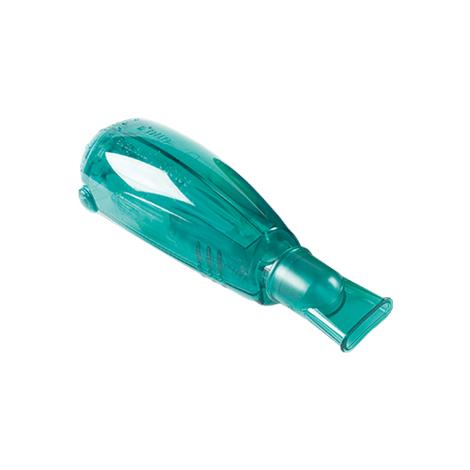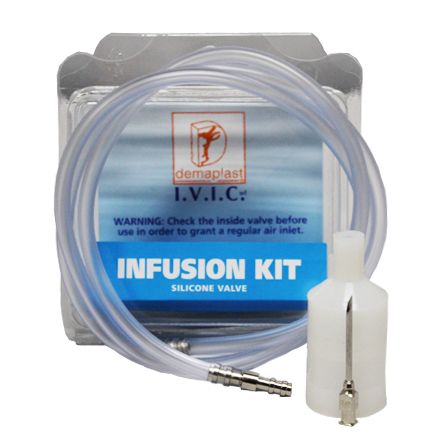

reviewed current literature regarding the diagnosis of tension pneumothorax. It is therefore important to have reliable parameters with respect to detection of tension pneumothorax in the pre-hospital setting. In a recently published study of our group, we found out that chest decompression on scene seem to have a strong positive impact on probability of survival in traumatic cardiorespiratory arrest (TCRA). Tension pneumothorax is a life-threatening injury which needs to be detected quickly and treated appropriately. Initial blood samples revealed hemoglobine concentration of 7,2 mg/dl, thromboplastine time of 31% and base excess of -22,5.
#Flutter valve manual#
Under manual cardiac massage, catecholamine adminstration and volume restoration, ventricular flutter occurred and was successfully defibrillated to a sinus rhythm with a blood pressure of 100 mmHg. Further exploration of the thorax showed an insufficient filling of the ventricles, an apical lung rupture and comminuted multiple rib fractures. A subcutaneous emphysema but also a massive tension pneumothorax on the left side was visible, despite the inserted chest tube on scene. Now available developed chest film demonstrated correct tube positioning corresponding to the in situ findings. After opening the thorax it could be seen that the chest drain with the connected Heimlich flutter valve had been placed correctly in the pleural space. A left side resuscitative thoracotomy was performed for direct cardiac massage and thoracic aortic occlusion.
#Flutter valve free#
Focused assessment with ultrasound in trauma (FAST) revealed neither pericardial effusion nor massive free abdominal fluid.

An immediate chest film was taken the moment, when the patient was placed on the radiotranslucent trauma room table. Prior auscultation of the breath sounds was not possible due to the massive emphysema. Assuming a contralateral tension pneumothorax, a chest tube was placed on the right side while still on the gurney. Inspection of the tube and valve showed no obstruction through bending or clotted blood. At 12:25 the patient was admitted to our trauma room undergoing manual external chest compressions with a massive subcutaneous emphysema despite the pre-hospital inserted chest tube, which had been inserted on the left side.

At 12:10, during transport, the patient suffered from cardiorespiratory arrest with asystole. The patient was transferred in a critical condition 150 miles by helicopter from the rural district to the next level I trauma centre. Epinephrine and dopamine were then given as the response to fluid resuscitation was not sufficient. Fluid resuscitation with cristalloids and colloids was initiated. Emergency endotracheal intubation was performed and as the breathsounds over the left side were impaired, a tube thoracostomy was performed via a Monaldi approach in the 3 rd intercostal space midclavicular line and connected to a Heimlich flatter valve. Initial ECG monitoring showed ST elevations in the aVR lead. He was able to communicate and to respond to given commands but had no measurable blood pressure. Initially, the patient was in severe respiratory distress due to flail chest. 10 minutes after the accident, an advanced life support team arrived on scene. Failure in this type of valve may lead to recurrent tension pneumothorax.Īt 10:45 the 68 year old, male patient got injured after being attacked by a bull while working at a rural slaughterhouse. We would like to raise awareness to the fact that if a Heimlich flutter valve is applied in the pre-hospital setting it should be used with caution. We assume that the Heimlich valve leaves did not open up and thus tension pneumothorax was not released.

The initial chest film showed a persisting tension pneumothorax, despite the chest tube that had been correctly placed and connected properly to the Heimlich valve. During air transportation the patient suffered from cardiorespiratory arrest with asystole and was admitted to the trauma room undergoing manual chest compressions. The decompression was by tube thoracostomy which was connected to a Heimlich flutter valve. We report of a patient suffering from tension pneumothorax despite insertion of a chest drain at the accident scene. Referring to our case report we would like to discuss the utilization of these devices. There are many different methods of decompression using different techniques, devices, valves and drainage systems. A serious consequence of thoracic trauma is pneumothorax, a condition that quickly can become life-threatening and requires immediate treatment.ĭecompression is the state of the art for treating tension pneumothorax. Thoracic injuries play an important role in major trauma patients due to their high incidence and critical relevance.


 0 kommentar(er)
0 kommentar(er)
